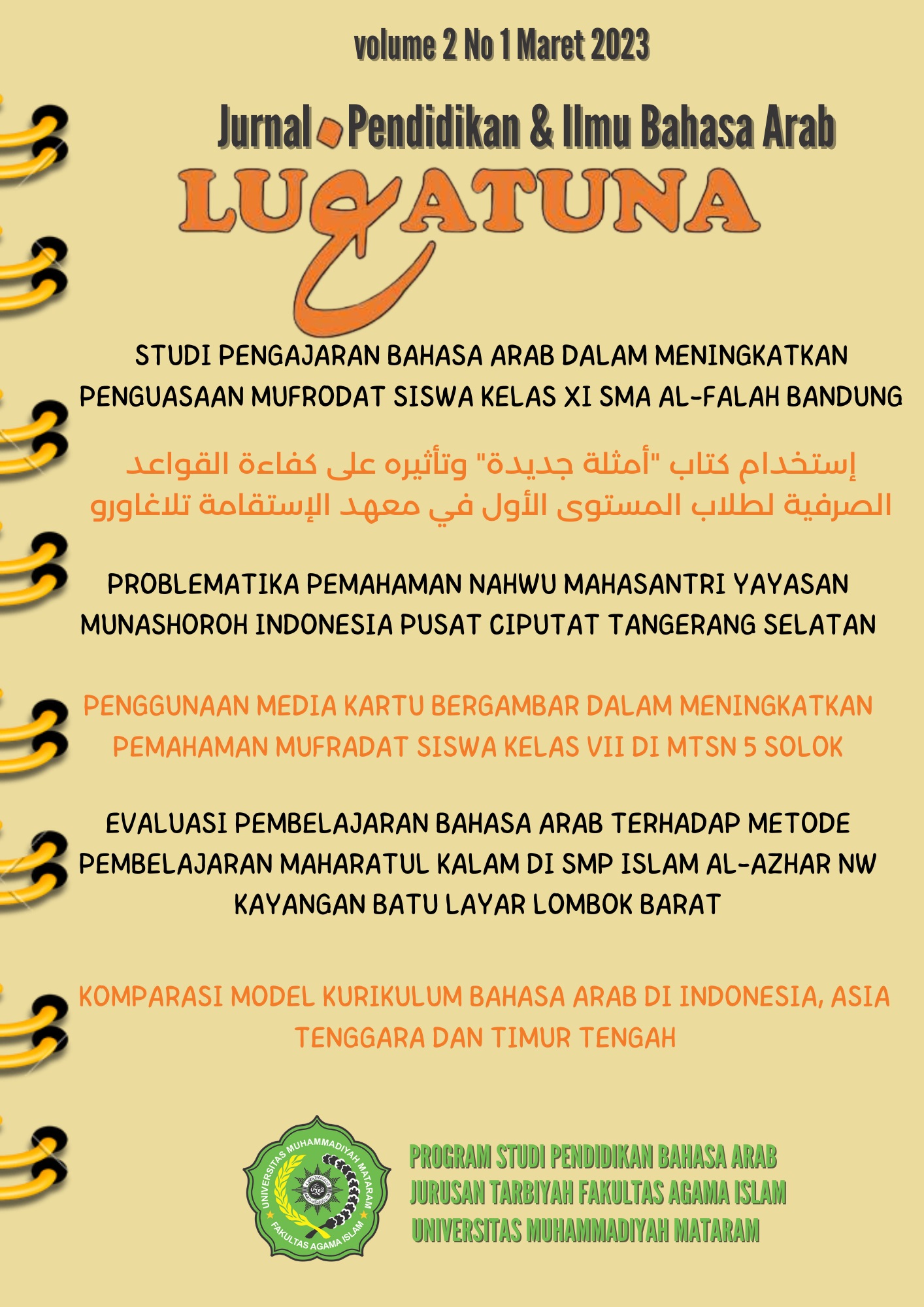KOMPARASI MODEL KURIKULUM BAHASA ARAB DI INDONESIA, ASIA TENGGARA DAN TIMUR TENGAH
DOI:
https://doi.org/10.31764/ljpb.v2i1.12458Abstract
In the world of education, the curriculum serves as a guide that provides the direction and goals of education, as well as the content to be learned. Without a clear curriculum, learning will not take place effectively. This paper aims to examine and compare Arabic curriculum models in Indonesia, Southeast Asia, and the Middle East. This study uses the type of research Library Research, which uses primary and secondary data sources from journals that have been selected and are relevant to the title. The most important finding in this study is that the Arabic language curriculum model in Indonesia, Southeast Asia and the Middle East shows that the three educational curriculum management systems are merely guidelines, while the operational implementation is almost the same, the teaching materials are all in one system. In Indonesia, the curriculum is oriented towards mastery of the four maharahs; maharah istima', maharah kalam, maharah qiro'ah and maharah kitabah, while in some other Southeast Asian countries the curriculum model is goal-oriented which is a truth claim to religious understanding, especially in Muslim-majority countries. And for the Middle East, the Arabic language curriculum was compiled from several books by a team of a group of teachers at a language center, Arabic was only used as the language of instruction in learning. The contribution of this research can provide new insights about flexibility and progressiveness for the development of Islamic education.Downloads
Published
2023-03-30
Issue
Section
Articles

